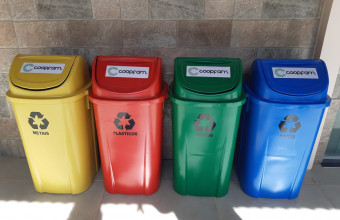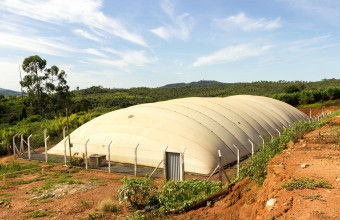Tradition and science go hand in hand in a small cooperative in the Amazon Rainforest. Cooperar – Mapiá and Médio Purus Agro-extractive Cooperative – systematized the knowledge of the riverside population to the technical-scientific knowledge to create a plan for sustainable forest management of the forest. The goal is to generate job opportunities and income for the communities, while also ensuring the well-being of future generations on a local, regional, and global scale.
With about 450 cooperative members, Cooperar brings together the riverside population of the village of Céu do Mapiá. A humble people, with a low level of education, little assistance from public policies, and a huge environmental awareness. Because they are children of the forest, they want to see it standing, and count on sustainable management technology to produce with a high level of sustainability and respect for the environment.
To get wood without devastating the forest, they have developed a forest management system that consists in removing only part of the largest trees, leaving the remaining parts protected. Thus, the clearings caused by falling trees and the paths opened for transportation are quickly reforested.
Since this is an activity related to the sustainable use of natural resources in a Federal Conservation Unit, the supervision and legal monitoring is carried out by the Chico Mendes Institute for Biodiversity Conservation (ICMBio), through the National System for the Control of the Origin of Forest Products (SINAFLOR), and by the Brazilian Institute of Environment and Natural Resources (IBAMA).
Furthermore, the cooperative has forest certification from the FSC – Forest Stewardship Council. An official audit was carried out by the Institute for Forest and Agricultural Management and Certification (IMAFLORA), which resulted in the approval of the Forest Certification for the project, which is now one of the few initiatives of community forest management certified in Brazil.
The project counted on the partnership of Nova Era Institute (INE), Social and Environmental Institute of Viçosa (ISAVIÇOSA), and the Social and Economic Solidarity Institute (ISES). A total of R$1.3 million was invested in the project, of which R$ 251.9 thousand came from the cooperative itself, and R$ 1.076 million from organizations willing to work for the preservation of the Amazon forest and for the strengthening of the low-carbon economy.
It is worth mentioning: besides working with timber forest management, Cooperar operates in different production chains, such as wild cacao, Brazil nuts, vegetable oils, food production and processing, crafts, phytotherapics, cosmetics, and mulateiro (Calycophyllum spruceanum) bark.
CARE WITH GUARANTEED RETURN
O desenvolvimento de cadeias produtivas florestais sustentáveis torna os povos tradicionais da região verdadeiros guardiões da floresta de onde tiram seu sustento. No caso da Cooperar, toda a cadeia produtiva, desde a colheita até o beneficiamento, recebeu capacitação em manejo sustentável e tratos culturais nos cacaueiros para ganho de produtividade.
The development of sustainable forest production chains makes the traditional peoples of the region true guardians of the forest from which they obtain their livelihood. In the case of Cooperar, the entire production chain, from harvesting to processing, received training in sustainable management and cultural treatments on cocoa trees for productivity gains. Since the implementation of this new system, the cooperative has registered a leap in annual wild cocoa productivity from 4 tons to 12 tons, generating work and income for 24 families.
The project also established commercial agreements to increase the purchasing power of the cooperative members in an industrial and commercial warehouse located in the municipality of Boca do Acre. In addition, Cooperar’s boats and production structures have been refurbished.The communication with the six productive centers of the cooperative was also prioritized, through the installation of radio communicators.
Finally, with the use of GPS, the routes and producing communities were mapped.
All this contributed to generate job and income opportunities for the riverside communities; implement public policies in the territories, and improve the production, storage, and outflow structures of the cooperative members’ production centers.





